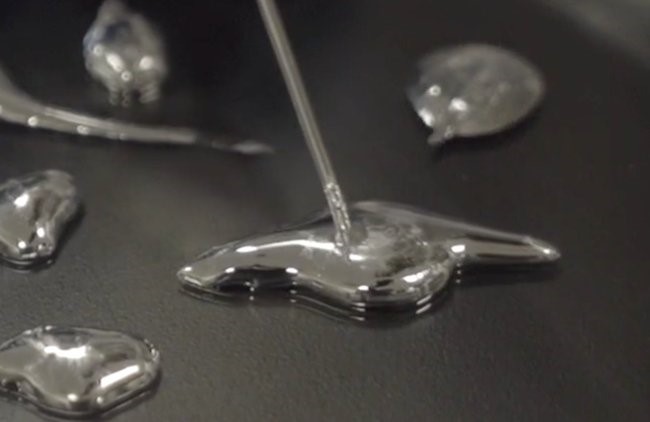
By Brian Santo, contributing writer
Deformable robots would be endlessly useful. There are any number of materials available that can serve as the bodies of robots that would wiggle and wriggle; what’s lacking is electronics that are similarly deformable and would enable and control the movement. This is one of the inspirations for investigating liquid metal electronics, and the recent demonstration of a liquid metal switch is an encouraging sign that liquid metal electronics might be not just possible but also practical.
Some of the applications of deformable robots include “endoscopic manipulators for minimally invasive surgery, power-assist suits for human-movement support, and flexible agents for entertainment,” according to a paper from a group at Johns Hopkins who is developing algorithms for controlling the movement of such machines.
Researchers at Carnegie Mellon University collaborated with a team at North Carolina State University (NC State) to create the closest thing yet to a mimetic polyalloy , a nontoxic combination of gallium and indium that remains liquid at room temperature.
The researchers found that if they applied a voltage in one direction, a droplet of the material would separate. When applying a voltage in the other direction, the separated droplets would reconnect. In both cases, the applied voltage induces an electrochemical response.
Voltages required currently vary between 1 V and 10 V; the researchers believe that this is the first fluidic switch that works with voltages commonly used in the electronics industry.
The paper on the research describes the electrochemical reaction: “droplet separation is governed by a unique limit-point instability that arises from gradients in bipolar electrochemical reactions that lead to gradients in interfacial tension.”
The process is akin to what happens in a transistor. Carmel Majidi, one of the authors of the paper on the subject and a mechanical engineer at Carnegie Mellon’s Soft Machines Lab, told the news service Phys.org , “We have these two droplets that are analogous to source and drain electrodes in a field-effect transistor, and we can use this shape programmable effect to open and close the circuit. You could eventually use this effect to create these physically reconfigurable circuits.”
The researchers say that the material can be infused in rubber, opening the possibility that the new liquid switches could lead to a type of skin that is both synthetic and electronic.
Image Credit: College of Engineering, Carnegie Mellon University
Advertisement
Learn more about Electronic Products Magazine





